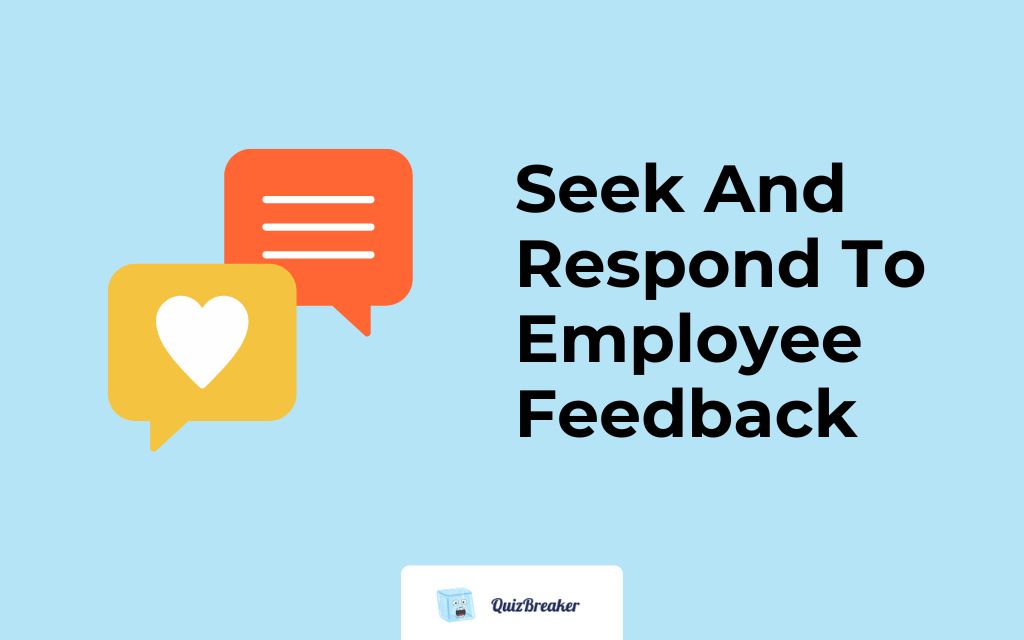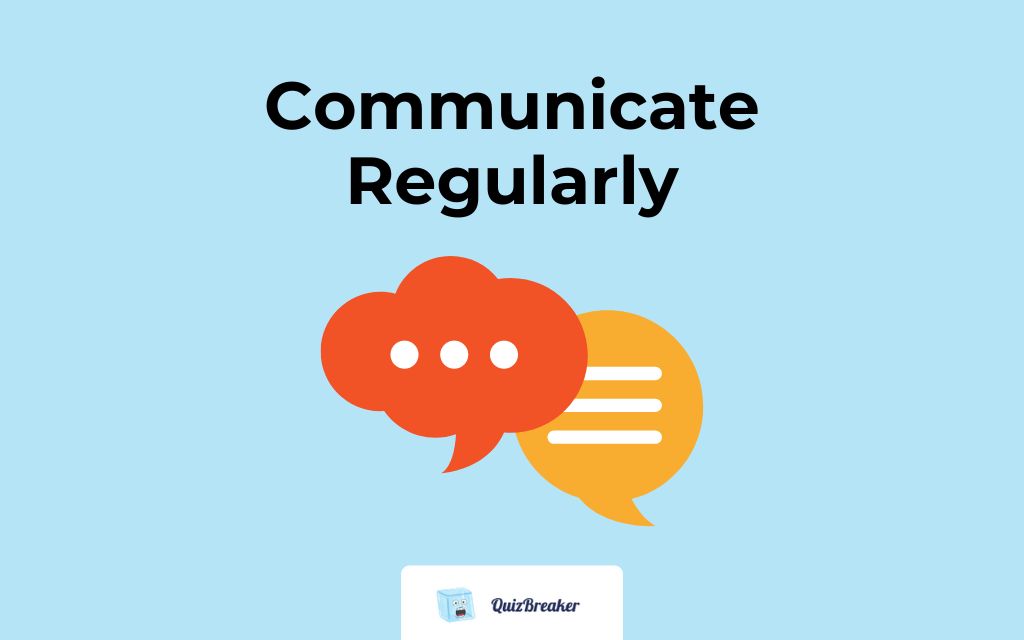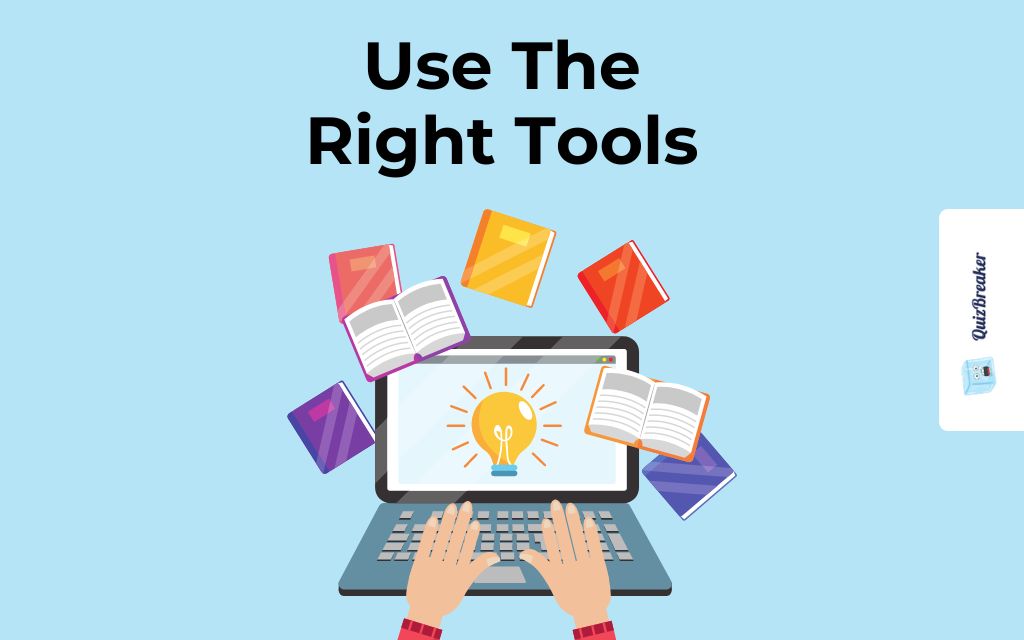In general, companies that allow employees to work remotely see higher levels of productivity and engagement.
At the same time, though, remote employees may also have a harder time staying focused, especially when they first switch to working from home instead of working in a traditional office. At least for 27 percent of employees report a boost in overall productivity when the company shifts to online working arrangements.
If you’re worried about this being the case for your team members, keep reading. Listed below are 10 employee engagement strategies and tips on how to have a highly engaged workforce, fast.
What is Employee Engagement?

Leading corporate research company Gallup defined Employee Engagement as "the involvement and enthusiasm of employees in their work and workplace."
In essence, employee engagement is a way to measure your team members' individual (and collective) overall excitement about the work they do in your organization, the environment they're part of, and more. There's no one way to measure employee engagement, but many experts point to metrics such as pulse survey ratings, productivity, employee retention rates, and more.
The idea of employee engagement as whole is to get a glimpse at how active and engaged your employees are at work. Better employee engagement can result into many positive affects, such as better employee wellness, higher productivity, and even improved revenues.
5 Drivers of Employee Engagement

Gallup has spent years studying employee engagement. Once, people's top drivers might have been salary, boss, annual reviews, and so on. But times are changing and so are our employess. Today, experts have come to notice five drivers of employee engagement.
1. Purpose
Employees need to feel that their work has meaning and that it ultimately makes a difference in other people's lives and affairs. We now see that employees understand and identify with the mission and purpose of the organization are more likely to be engaged.
A sense of purpose goes beyond just knowing what the organization does. Your team also needs to understand how one's individual role contributes to the greater goals of the company.
2. Development
Opportunities for learning and growth are a big part for employee engagement. Today's employees and team members want to enhance their skills and advance their careers.
Your organization should prioritize professional development. Some things you can do include providing training and clearly outlining potential career paths. Such efforts will help your employees feel valued and invested in their jobs.
3. Caring Manager
The role of a manager no longer stops at making sure day-to-day operations continue. They now play a role in employee engagement. A large chunk of people who leave organizations do so because of their direct supervisor. More specifically, 57% of people report leaving a company because of their boss.
On the other hand, managers who are attentive, supportive, and genuinely care about the well-being and success of their employees can significantly boost engagement levels. This includes everything from daily interactions to career and personal development discussions.
4. Ongoing Conversations
Regular and meaningful communication between employees and managers is essential. Some things you can do to power this driver in your business includes continuous feedback, open dialogue about progress, and discussions about goals and challenges.
Ongoing conversations help ensure that employees feel heard and that their feedback is valued, which can reinforce their sense of belonging and commitment.
5. Focus on Strengths
When employees are encouraged to use their strengths, they are more likely to excel and be engaged with their work.
Managers should help employees identify their unique strengths and then align their tasks and responsibilities to these areas. You can do so using workplace personality tests, skills trainings, or psychometric tools.
Quick (Quizbreaker) Break
If you're looking to improve your employee engagement, one tool you might want to check out is ours— Quizbreaker. We've created this resource with the intent of helping companies connect and engage with their teams no matter where they might be.
Quizbreaker has all kinds of tools to push many of the major drivers of employee engagement, including:
- Icebreaker tools and trivia games to get to know each other and have fun together
- Pulse surveys to get team feedback
- A Kudos Wall to promote employee recognition
- Escape room challenges to promote critical thinking and collaboration
- And many more!
Ready to start your employee engagement enhancement journey? We're with you! Try out Quizbreaker for 21 days and you'll see the difference it makes at work.
10 Most Effective Ways to Improve Employee Engagement
Here are 10 of the most effective ways to improve employee engagement in your company:
1. Seek And Respond To Employee Feedback
5. Conduct One-on-One Check-ins
6. Provide Easy Access To Information
8. Promote Health and Wellness
9. Host Virtual Team Building Events
10. Seek and Respond To Employee Feedback
Want more details? Let's dive in!
1. Seek And Respond To Employee Feedback

As a team leader, you must seek and respond to feedback from your remote employees. They’ll feel more engaged and motivated if they know that you want to hear from them and are willing to answer their questions and consider their concerns.
Put out regular calls for questions or comments or, during meetings (both group meetings and one-on-one check-ins), invite people to provide you with feedback. These consistent efforts can make a big difference and help your team members feel more comfortable about speaking up.
2. Set Clear Expectations

Clear expectations are crucial in any work environment if productivity and engagement levels are top priorities. When it comes to remote work & company culture, though, it’s even more important for managers and supervisors to take the time to explain what they expect from their employees.
Best practices include being clear about when you expect people to start work each day, for example, or about the specific tasks you want to be completed. When you’re setting expectations for remote workers, it’s a good idea to emphasize the importance of meeting attendance, too. That way, you can ensure that people show up and receive key information first-hand.
3. Reward Positive Behaviors

When you’re managing a remote team, it can be easy for things to fall through the cracks. Make a sincere effort not to overlook people’s accomplishments and positive behaviors, though.
If you have an employee who’s going above and beyond, shout them out and let them know that you appreciate their hard work. Something as simple as recognizing them in the group chat or team Slack channel can make a big difference and may motivate other employees to level up their work performance, too.
We've published a great series of guides that you'll find very useful for coming up with ideas to engage a remote team:
4. Communicate Regularly

Regular and effective communication with your team members helps you to establish a genuine relationship with them. This, in turn, can help them to feel more motivated and can increase employee engagement. If they know and feel connected to higher-ups within the company, they may feel a greater sense of responsibility and will have an easier time staying focused on their goals.
You should also consider doing an annual or quarterly employee engagement survey.
5. Conduct One-on-One Check-ins

In addition to communicating via email or messages in the company’s Slack channel, it’s also a good idea to conduct regular one-on-one check-ins with team members.
Many people prefer to communicate in this way rather than in group messages, so a mix of both helps you to cover all your bases and ensure no one gets overlooked. It allows you to hear from quieter team members and find out the best way to become highly engaged employees and be more productive, too.
Also note, every employee should know who their direct reports are.
6. Provide Easy Access To Information
.jpg)
If you want your team members to follow specific rules or guidelines, make sure they have easy access to that information. For example, if you have a style guide that engaged employees need to be following, make sure everyone has a copy of that style guide.
Keep important documents updated, too, and send messages letting people know when updates take place. This helps you to keep everyone on the same page and minimizes the risk of confusion.
7. Use The Right Tools

Mixing the right people with the right tools can make it much easier for you to keep employees engaged and in the loop. Invest in a good productivity management system that helps you stay connected to your team and provide them with feedback regularly. Look for a system that integrates with other tools, such as Slack or Google Docs, too, for easy communication and document sharing.
8. Promote Health And Wellness

When your employees are healthy, they’ll have an easier time being productive and staying focused during the workday. Encourage employees to exercise regularly, eat healthfully, and manage their stress for a good work life balance.
You may want to invest in resources to help them accomplish these goals, too. After all, just because your team is remote, that doesn’t mean they don’t still need access to things like regular wellness checks or mental health care.
9. Host Virtual Team-Building Events
.jpg)
When you’re in charge of a remote team, it’s easy for team-building opportunities to fall by the wayside. There are lots of ways that you can have fun and build rapport as a team from afar, though. For example, you could host a virtual game night or a virtual happy hour to give everyone a chance to let their hair down and connect on a different level.
10. Encourage Virtual Water Cooler Chat

Water cooler chat and opportunities for small talk play are a great way to foster a collaborative work environment and provide employees with opportunities to get to know each other better in an organization. It can be hard to recreate that in a remote work setting, though.
Setting up a Slack channel dedicated to water cooler conversations can give team members a place to shoot the breeze, blow off some steam, and feel connected to their colleagues on a personal level. It might help if you and other managers or supervisors pop into this chat, too, to make it clear that you want remote employees using it regularly.
You can also use this random topic generator to come up with all kinds of water cooler conversations.
Here are More Tips and Practices to Improve Employee Engagement
Do you want to expand your employee engagement ideas beyond the ideas above? Here are 10 more ways to improve employee engagement:
-
Encourage Continuous Learning and Employee Development: Provide opportunities for employees to upskill through workshops, online courses, and certifications. This not only boosts engagement but also helps employees feel more valued and equipped for their roles.
-
Celebrate Milestones and Achievements: Recognize both work anniversaries and personal milestones. This shows employees that the organization values them as individuals, not just for their output.
-
Flexible Working Hours: Recognizing that everyone has different peak productivity times and life responsibilities can improve engagement. Offering flexibility can lead to increased job satisfaction.
-
Encourage Cross-Team Collaboration: Mix teams up for certain projects or brainstorming sessions. This encourages the sharing of different perspectives and helps break down silos.
-
Provide a Clear Career Pathway: Employees are more engaged when they see a future for themselves in the organization. Offering growth opportunities and clear pathways for advancement can boost morale and commitment.
-
Invest in Mental Health Resources: Especially in stressful times, providing resources, counseling, or even just platforms for discussion about mental health can make employees feel cared for.
-
Encourage Employee-led Initiatives: Allow employees to take the lead on passion projects or initiatives they feel would benefit the company. This gives them ownership and a sense of contribution beyond their regular duties.
-
Regular Feedback Loops: Instead of waiting for an annual review, have regular feedback sessions. This helps employees understand where they stand and what they can improve on in real-time.
-
Transparent Decision Making: When employees understand the "why" behind decisions, they are more likely to buy into the vision and direction of the company.
-
Cultivate a Culture of Employee Recognition: Make it a norm for peers to recognize and appreciate each other. Platforms or regular sessions where employees can give shout-outs can boost morale and engagement.
Frequently Asked Questions
Here are some important and frequently asked questions about employee engagement and how to improve the employee experience.
Why is improving employee engagement important?
The great resignation showed us that employees now care more than ever about employee satisfaction. Accordingly, companies should do the same. Not only does improving employee engagement lower employee turnover, it also has a direct impact on business results.
One study by Gallup showed that better engagement improved companies' profitability by 21%. Higher engagement also has a positive impact on work productivity and employee happiness. It also improves employee retention and work-life balance, which also have direct effects to business outcomes.
How do you measure employee engagement?
There's no one way to tell if you have an engaged or disengaged employee. It's difficult to quantitatively measure high or low engagement. However, tools like pulse surveys seem to help professionals understand how engaged or disengaged companies might be. One tool we recommend to HR teams is our pulse survey tool on Quizbreaker, which automates pulse surveys for teams and give extremely helpful results.
Who should be in charge of improving employee engagement?
Normally, an HR leaders or teams takes ownership of employee engagement and wellness programs. However, it also falls on the rest of the leadership team to truly have the biggest impact.
Hard culture helps improve work happiness and engagement by strides. While things like having core values and sending internal communications about the company's mission help, things like regular feedback, managing working hours so no one gets burnt out, and having a good onboarding process help immensely.
Start Improving Remote Employee Engagement Today
If you’ve been feeling overwhelmed trying to figure out how to improve remote employee engagement levels in your company, you’re in luck. These 20 tips will help you ensure your team members are set up for success and have an easier time staying focused and productive while working from home.
Do you want to learn more about running your business remotely and keeping your old and new employees engaged? If so, we have lots of other resources available on our site.




